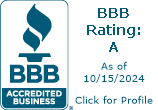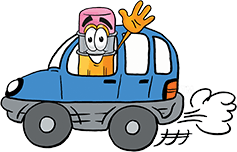Vermont CDL Test Requirements and Endorsement

- License Classifications and ID Requirements
- Helps to Prepare for the CDL Exam
- Obtain Your CDL Endorsement by Vehicle Type
How to Obtain Your CDL
When you enroll in our Vermont CDL practice test course, you will be able to take one or more knowledge tests to prepare yourself for the official exam (the courses that are right for you will heavily dependent on what license class and endorsements you need). To apply for a CDL, you must take a general knowledge test and pass several skills tests. Our courses will help!
Available CDL Courses
Our comprehensive online course can be broken down further into the following individual courses: tankers, pre-trip inspection, school bus, hazardous materials, general knowledge, air brakes, combination vehicles, doubles/triples, and passenger transport.
- General Knowledge
- Air Brakes
- Combination Vehicles
- Doubles/Triples
- Hazardous Materials
- School Bus
- Passenger Transport
- Pre-trip Inspection
- Tankers
Sign Up Now - Instant Access
When do I need a CDL in Vermont?
If you currently live in the State of Vermont and drive a Class A, B, or C commercial vehicle, you must possess a CDL. Additional CDL endorsements are required for double/triple trailers, passenger vehicles, tanker vehicles, and vehicles marked for the transportation of hazardous materials.
To operate a commercial vehicle, you must obtain one of the following:
- Class A License - For "combination" vehicles in which the Gross Vehicle Weight Rating (GVWR) of the vehicle in tow exceeds 10,000 pounds, you must possess a Class A commercial license.
- Class B License - This class pertains to single or combination vehicles in which the GVWR or GCWR of the vehicle exceeds 26,000 pounds but the weight of the vehicle in tow does not exceed 10,000 pounds.
- Class C License - If a vehicle is designed to transport 16 or more passengers (including the driver), is marked for the transport of hazardous materials, or does not meet the criteria for Class A or B license requirements, it will fall under this classification.
Skills Test
After you have passed the required knowledge test(s), you may then take the CDL skills test. The three types of general skills that will be tested in this course are:
- Pre-trip Vehicle Inspection - During this segment, the examiner will ask you to determine whether your vehicle is safe to drive. You must also provide the reasoning as to why you believe so.
- Basic Vehicle Inspection - As the course name suggests, you will also be asked to operate your vehicle in the most basic of functions. This includes reversing, driving forward, and making controlled turns.
- On-road Test - Finally, you will be tasked with safely driving your vehicle in a variety of traffic situations. Here you may have to maneuver through left and right turns, intersections, railway crossings, curves, up and down grades, as well as on single or multi-lane roads, streets, or highways
Further Information and Fees
The Federal Motor Carrier Safety Regulations require drivers to pass a physical exam every two years. Some main physical requirements include:
What Should I Bring To The Department Of Motor Vehicles?
Before you head to the Vermont DMV Office, make sure you have all of the following required documents to get your CDL driver's license:
- You must maintain good hearing
- 20/40 vision
- 70-degree field of vision in each eye
Prior to heading to the Vermont DMV, be sure to bring along your proof of identity and residence, as well as your current driver's license, physical examination form, and your social security card. Some of the following links will prove beneficial to completing our course:
Vermont ID and Required Documents
Driver's License Info on Vermont's Official DMV website


